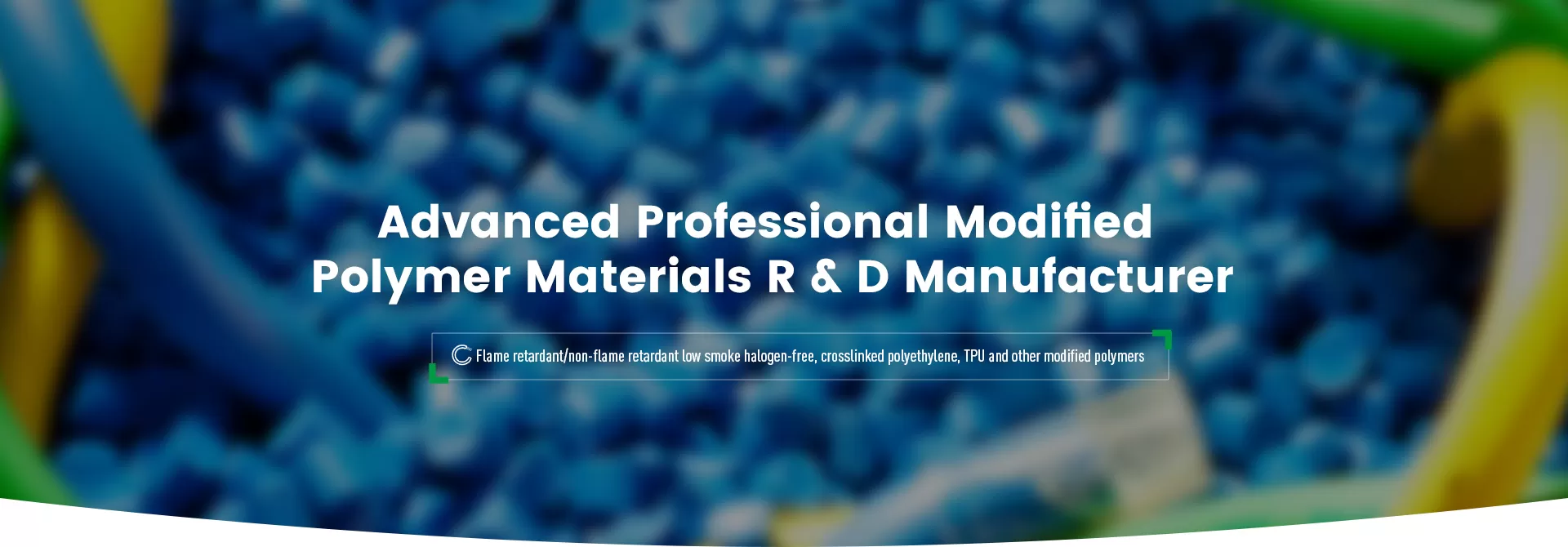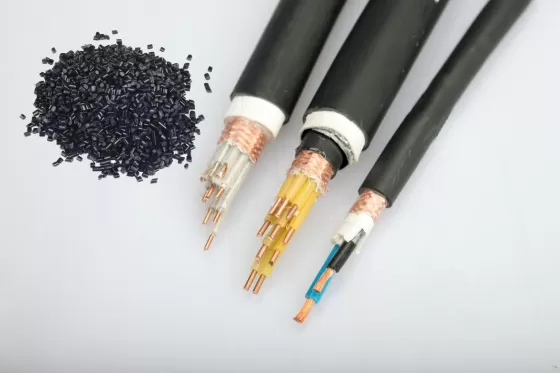

Irradiation cross-linked low-smoke HFFR B1 cable material is made of high-purity resin as the base material, with halogen-free flame retardant, cross-linking agent, antioxidant, etc. mixed and extruded into granules. It has excellent properties such as halogen-free, heat-resistant, flame-retardant, low-smoke, and weather-resistant. It has no precipitation pollution, meets the relevant requirements of Rohs, and is easy to extrude and process.
Application:wire and cable for construction.
B1 cable material is a high-performance cable material. It produces less smoke when burning and does not contain halogen, so it does not produce toxic gases. It is particularly suitable for occasions with high safety and environmental protection requirements, such as subways, high-rise buildings, ships, oil platforms, etc.
Raw material mixing: EVA resin, linear low-density polyethylene, maleic anhydride grafted linear low-density polyethylene, modified halloysite nanotubes, modified magnesium hydroxide, polyphosphate flame retardant, antioxidant, lubricant and other raw materials are mixed evenly in a certain proportion.
Melt extrusion: Use a twin-screw extruder for melt extrusion granulation to obtain cable sheath material.
Irradiation cross-linking: Through electron beam irradiation, the cross-linking degree of the material is increased, and its mechanical properties and heat resistance are enhanced.
High flame retardancy: It can meet the B1 flame retardant standard and has excellent flame retardant properties.
Good mechanical properties: Both tensile strength and elongation at break reach a high level.
Excellent processing performance: It exhibits good process performance during cable extrusion.
This material has a wide range of applications and can be used to prepare various wire or cable sheaths, especially those that require high flame retardant properties and environmental protection characteristics. With the improvement of environmental protection and safety requirements, the demand for B1 radiation cross-linked low-smoke halogen-free flame retardant sheath materials is expected to increase further。
| Test items | Value | Typical Value | Unit | Method |
| Physical property | ||||
| Hardness | 92±3 | 92 | Shore A | GB/T 2411 |
| Density | ≤1.68 | 1.65 | g/cm3 | GB-T 1033 |
| Low temperature embrittlement temperature | ≤15/30 | 0/30 | PCS | GB/T 5470 |
| Tensile strength before irradiation | ≥8 | 8.8 | MPa | GB/T 1040 |
| Elongation at break before irradiation | ≥160 | 168 | % | GB/T 1040 |
| Tensile strength before aging | ≥10 | 12.2 | MPa | GB/T 1040 |
| Elongation at break before aging | ≥125 | 150 | % | GB/T 1040 |
| Thermal elongation 0.2MPa×200℃×15min | ||||
| Elongation under load | ≤100 | 40 | % | GB/T 2951 |
| Permanent deformation | ≤25 | 0 | % | GB/T 2951 |
| Aging performance 135℃×168h | ||||
| Tensile strength change rate | ≤-30 | -18 | % | GB/T2951.12 |
| Change rate of elongation at break | ≤-30 | -20 | % | GB/T2951.12 |
| Electrical performance | ||||
| 20℃ volume resistivity | ≥1.0×1014 | 2.7×1014 | Ω.cm | GB/T 1410 |
| Dielectric strength | ≥20 | 22 | MV/m | DIN EN 6024 |
| Flame retardant and combustion performance | ||||
| Oxygen index | ≥30 | 36 | % | GB/T 2406 |
| Halogen acid gas generation | ≤0.5 | 0.1 | mg/g | IEC 60754 |
| PH value | ≥4.3 | 5.5 | - | IEC 60754 |
| Electrical conductivity | ≤2.5 | 2 | μs/mm | IEC 60754 |
| Smoke density (with flame) | ≤100 | 85 | - | GB/T 8323 |
| Peak heat release rate | ≤180 | 150 | kW/m2 | ISO/5660 |
| Total heat release | ≤180 | 105 | MJ/m2 | ISO/5660 |
| Average heat release rate | ≤100 | 74 | kW/m2 | ISO/5660 |